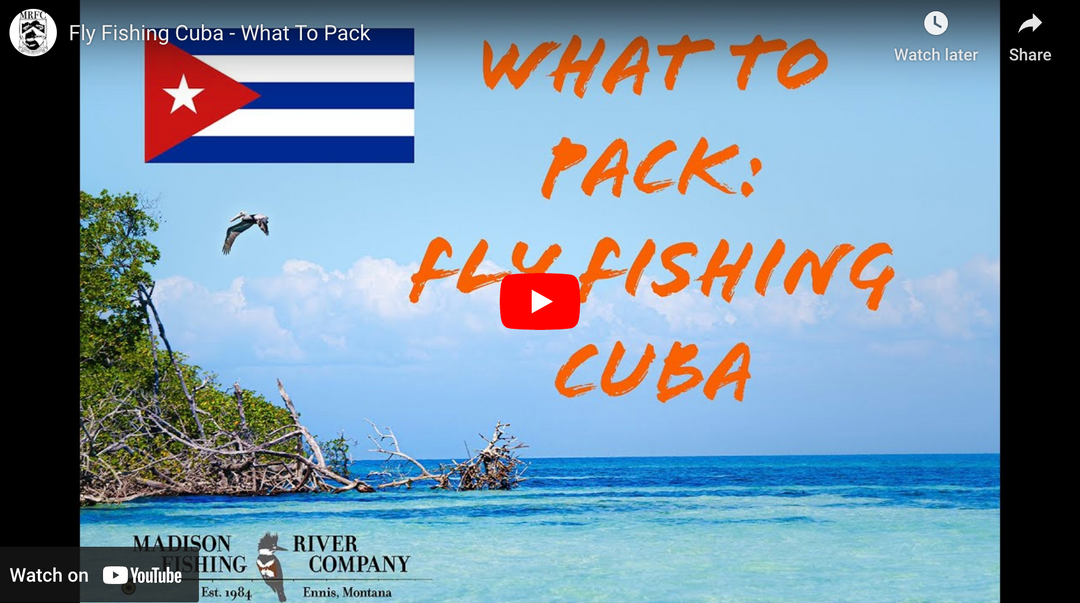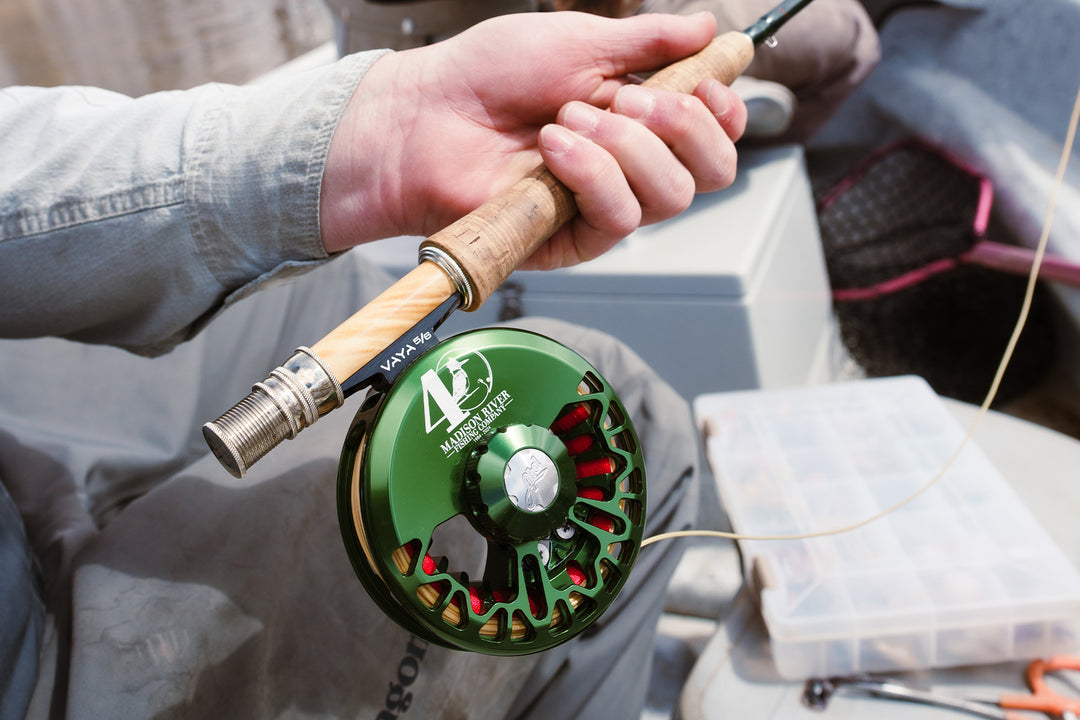Staying Comfortable in the Water While Fly Fishing in Montana


Turns out that even just those few months of having the freedom to move into the river and stay warm had such a big impact on my fishing that I right away started saving up to purchase another pair, although this time I would split for something a little more durable. My next pair of waders were a rubberized canvas, with the boots built in, and even had felt soles for traction. They were followed by the next big innovation, neoprene. Eventually I started working in the industry, and actually started doing product testing for a major fishing retailer. At this point in my life, I have been through many dozens of waders, to the point where I have a few ideas about what you might want to look for when getting a pair.

To start with, you must understand a fundamental law of physics, which states that all waders will leak eventually. The only variable here is how long it takes for that to happen. I have literally seen waders that leaked right out of the box, and I have had some that lasted several years before needing repairs. To those of you who brag of having waders that go longer than a decade without a leak, I offer both congratulations and condolences. Congratulations on getting a good quality pair, but my condolences that you are’t getting out fishing nearly enough! The major brands that you can find at a fly shop will generally be good quality, but beware the department store brands unless you don’t mind wearing trash bags over your feet. Even within quality brands, there will usually be several lines at different price points. The higher priced waders come with features like hand warmer pockets, or thicker and reinforced fabric at common stress points like the knees. You can even get waders that come with a waterproof fly, making bathroom stops much easier.

These days, almost all of the waders worth purchasing are made out of material that is both waterproof and breathable all at the same time. GoreTex is the original and the gold standard, but many quality manufacturers have developed similar materials. The basic premise is that these fabrics keep the river water out, but still allow your sweat to evaporate and pass through the material. These waders are lightweight, and far more comfortable to wear than the completely waterproof fabrics like neoprene, which could leave you completely soaked with sweat by the end of the day.

Waders can come in models with the boots built in, or as stocking foot, where you will need to purchase a separate wading boot to fit over the foot. The boot foot waders offer the convenience of quick on and off, and are usually less expensive. The boots will always fit on the loose side, which is good for ultra cold weather when you want to add insulation, but not so good when you are wading on rocky stream beds where twisting an ankle can be a real issue. Same is true if you will be hiking any distance to or from your fishing spot. With the possible exception of duck hunting or winter steelhead fishing, my money is always to go with a stocking foot wader, and a wading boot that fits like a hiking boot. You should note that most stocking foot waders come with a cuff that can be turned up or down. This is called a gravel guard, and the design is such that you turn them up when you put the waders on, then fold them down over you boot once it is on. In addition to keeping gravel out of your boots, they will also help to keep your laces from coming loose.

As for wading boots, the most important criteria is that they fit comfortably yet snugly over your waders, but the other important choice is what kind of sole you want on the bottom. Recall my friend who advised me to glue carpet to the bottom of my sneakers to improve traction. The modern version of this is to get boots with felt soles. The felt has a better grip on rock slime than standard rubber like you would find on hiking boots. There are also boots that have special made rubber bottoms where the rubber is extra soft to help hold to the slippery rocks on a stream bottom. Of the two, felt will have the better grip in the river, and it is my recommendation for most beginners. While the rubber soles don’t have as good a grip on the river bottom, they last longer, and have better traction on shore line rocks, wet grass and snow. They also last longer, so it may not be a big surprise that most guides tend to go with the rubber soled boots. Rubber soles have the added advantage that they are less likely to harbor spores for whirling disease, and other pathogens that might be moved from one watershed to another.

For those that really want to improve your in river traction, there are various studs or cleats that can be screwed into the bottom of either felt or rubber soled boots. These cleats will give you the most secure traction possible, as they bite through the moss and slime that covers rocks. Be forewarned however, never wear boots with cleats if you get into a boat of any kind, or you will find yourself swimming faster than falling on river slime. Most guides don’t take kindly to you tearing up the bottom of their boat! In addition to tearing up boat bottoms, they will also destroy carpet and most indoor flooring. Not for inside wear!

Another advantage of going the route of stocking foot waders and a separate boot, is that there are times in the heat of summer that it is more comfortable to go without the waders. We call this wet wading, and you still want the protection and traction of your wading boot. In this case I wear a neoprene sock, which is the same size as the foot part of my wader, so the boot fits the same whether I have waders on or not. Your feet will get wet in this set up, but combined with a pair of quick drying nylon pants, it really is a comfortable way to wade in the summer.

Speaking of comfort, there are times when you might need to step in the water occasionally, but are’t likely to be wading the river all day. A typical float trip in a drift boat fits this model. For these days, I like to wear a pair of river sandals and the quick drying nylon pants. The sandals give good traction when I need to step in the water, but dry quickly and are more comfortable than full on boots if most of my day will be in the boat.

There are a few important safety issues that you need to be aware of when you are wading. First and foremost is to ALWAYS wear a wading belt when you step into the water. Many waders come with them, but if they don’t, get something that will serve as a belt to tighten around your waist. This is critical in the case that you fall and take a swim. The belt will prevent your waders from filling with water, which could add about 80 pounds of weight, making it much harder to keep your head above water! I am partial to a belt that has some extra back support and a loop in the back where I can slip a large net when I need it. I am not a fan of the short “hip” waders that just come up to your thigh for anything other than very shallow water. Should you take a swim wearing hip waders, they will fill with water, and provide the same net effect as trying to swim with cinder blocks tied to your feet. Unless you are a fan of drowning, this is not a good thing. Finally, there are many variations of wading staffs that are easy to carry and can provide needed stability when wading tricky conditions. Whether it’s the fold up carry in a holster kind, a fully adjustable staff, or even an old ski pole, having that extra balance point can be a huge advantage when the rocks are slippery or the current is fast.

By Scot Bealer
Scot first started guiding in the 1980’s, and has fished extensively through the rocky mountain west and many other parts of the world. When not on the water, he is typically out working with his wife, Lea Frye, doing wildlife photography. See their work at https://www.leaf-images.com, or follow them on Instagram @lea.f_images























Leave a comment